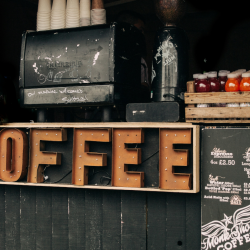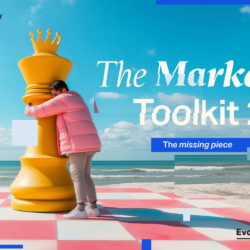If there was one story to have defined the world of technology and business in 2023, it was the artificial intelligence (AI) boom. The capabilities of AI have opened up a whole new world of opportunity: PwC estimates that AI will contribute almost $16 trillion to the global economy by 2030, having identified around 300 use cases for it so far.
But despite the increasing prevalence of AI in our everyday lives, many brands remain hesitant to use it in their marketing. Whether due to a lack of understanding, a desire to protect the company’s image, or concerns about putting jobs at risk, brands risk missing out on AI’s countless benefits.
The fact is, AI simply does some things better than humans
Going into 2024, we need to utilise AI in our marketing platforms as much as possible, and many companies need to catch up. From media bidding optimisation to generative AI tools, if you’re not using these features in your campaigns next year, it’s likely your performance isn’t going to be as strong as your competitors. But brands must also consider how they can use AI outside of marketing platforms and within their workflows. There are tasks AI can do accurately in seconds, such as data analysis, customer relationship management, and measurement of KPIs.
Marketing leaders must identify these tasks to ensure processes are streamlined and improve their decision-making.
AI can also deliver improved return on investment (ROI) for campaigns. Recent research by McKinsey reveals that marketing organisations that invest in AI see a revenue uplift of 3-15% and a sales ROI uplift of 10-20%. AI will be a revolution, much like the industrial revolution of the 18th and 19th centuries. We need to embrace it to improve overall productivity while pushing for growth.
Dangers to watch out for
Brands are increasingly waking up to this; over the last six months, some hesitance has waned. Some of the obscurity around the technology has been dispelled by the tech giants driving it forward, so adoption is on the rise. But, while it’s good that some of the fear has abated, there are pitfalls brands need to stay wary of. As powerful as AI is, it can’t yet do everything for you. These tools still need input, guidance and continuous review to ensure they stay on the right path. I’ve seen brands use AI for automated bidding, for example — but they tend to set it up and then forget about it. As a result, their campaigns lose direction and success stalls.
Adjusting targets based on performance and monitoring the quality of data being used by AI is as important as using the AI. Meanwhile, as the likes of Google and Facebook develop new generative AI tools that can be used to create thousands of brand assets at speed, there will be questions around these images that need addressing. Are they purely AI-generated, or are they using copyrighted imagery and ideas from the web? Are they brand-safe, and do they reflect the brand in the right way? Marketers must stay alert and monitor everything AI creates to ensure it remains brand-aligned.
And finally, brands need to be weary of what and how they use AI for to avoid being penalised. Google, for instance, doesn’t want the internet to be dominated by spam AI-generated content; however, it does value ‘helpful information’ regardless of how it’s been generated. The search engine, therefore, has tools to de-prioritise auto generated spam content from an SEO point of view.
Social media companies are also identifying and highlighting AI-generated content with flags, and these posts are being treated differently — so you can’t just use ChatGPT or Midjourney to churn out blog posts, creatives and social posts and expect results. The best combination comes from using AI with a human touch.
By guiding AI in the right direction, you can ensure high-quality, non-spam content that meets search quality rater guidelines to achieve positive outcomes.
The future of AI in marketing
It’s difficult to pinpoint an example of a brand using AI effectively in its marketing right now because, frankly, an effective campaign doesn’t look like it’s used AI. So it takes a lot of work to spot. From a creative perspective, however, some brands have successfully used AI in PR campaigns that have generated huge attention. This year, a JD Sports campaign went viral for its AI-generated video of London’s Big Ben wearing a North Face jacket. It might have confused some, but it was hugely successful as an awareness campaign, without the brand spending much time or money executing it.
So, there’s no doubt AI in marketing will become increasingly important. According to McKinsey’s research, 90% of commercial leaders expect to utilise generative AI solutions ‘often’ over the next two years. Perhaps the most exciting development over the next year and beyond, will be the opportunity AI gives smaller brands to play in bigger spaces. Previously, these brands were limited by their advertising budgets to digital display and social media and PPC. Now they’ll be able to buy media programmatically across all digital channels, and use AI to generate good quality creative content to go with it.
This can be particularly effective on a local basis. It might not make sense from an investment perspective for a local Leeds-based company to run a national TV campaign, for example, but they can take over the whole of Leeds, driving mass awareness in a quality way across Connected TV (CTV), Digital out of home (billboards) and audio. That’s something they probably couldn’t do without AI.
So now isn’t the time to worry about whether AI will steal our jobs in the future. Now is the time for brands to take advantage of it. Because it’s not AI you’re competing with, it’s the brands that use AI better than you.
Featured image: Mario Azzi / Unsplash



























